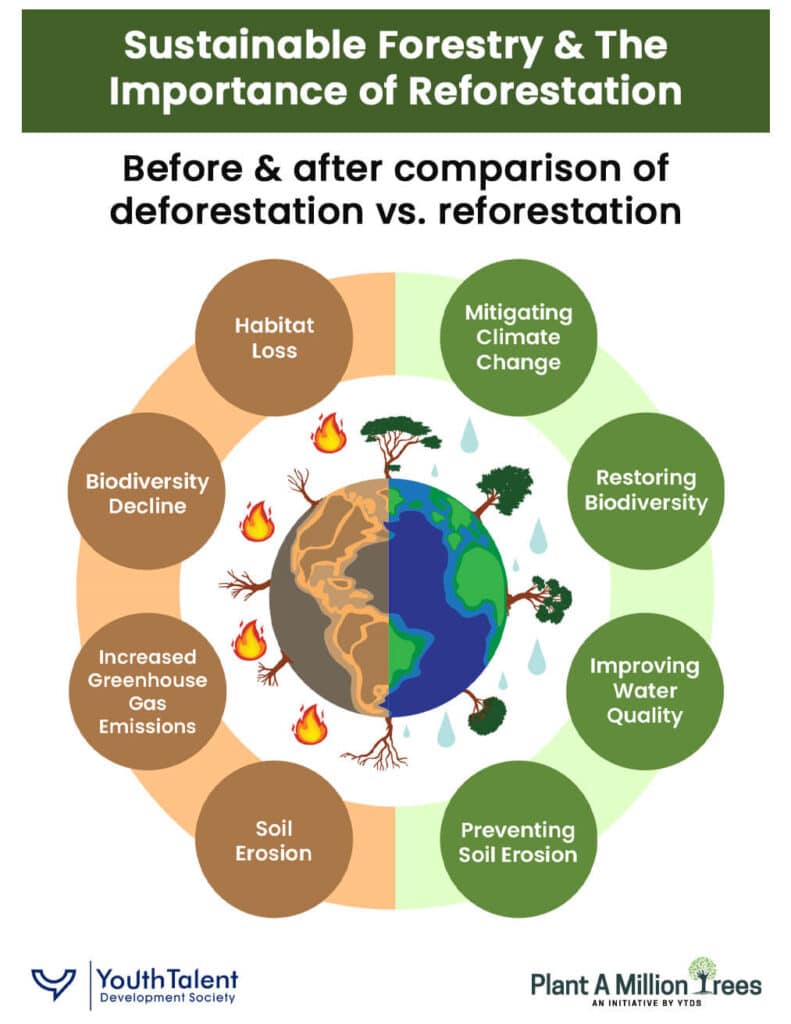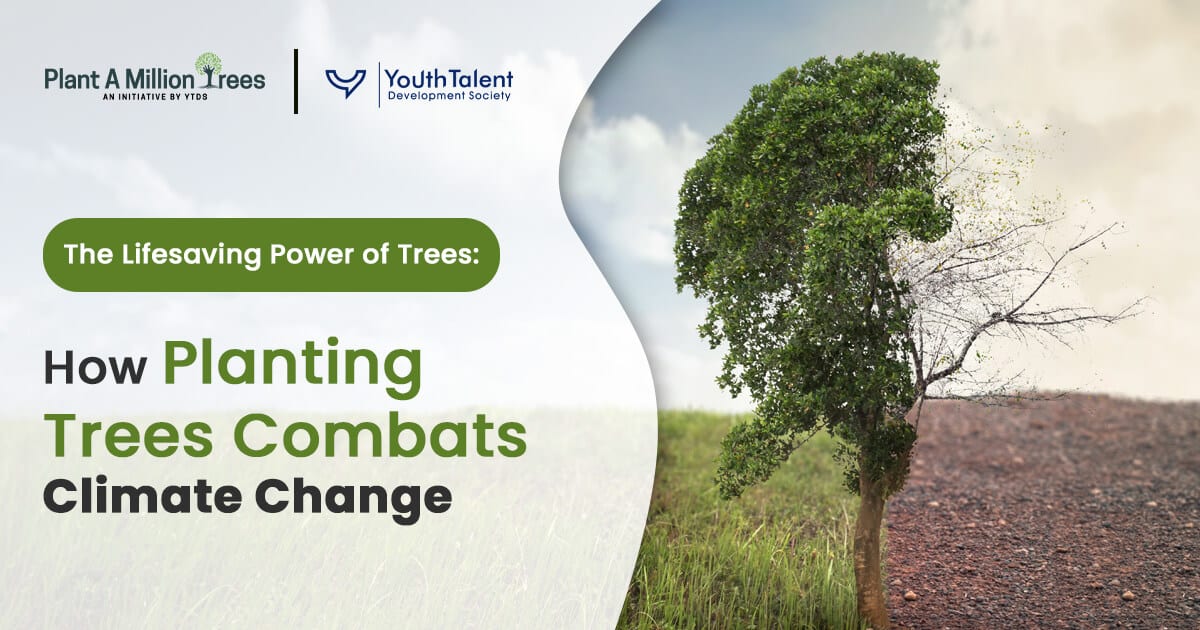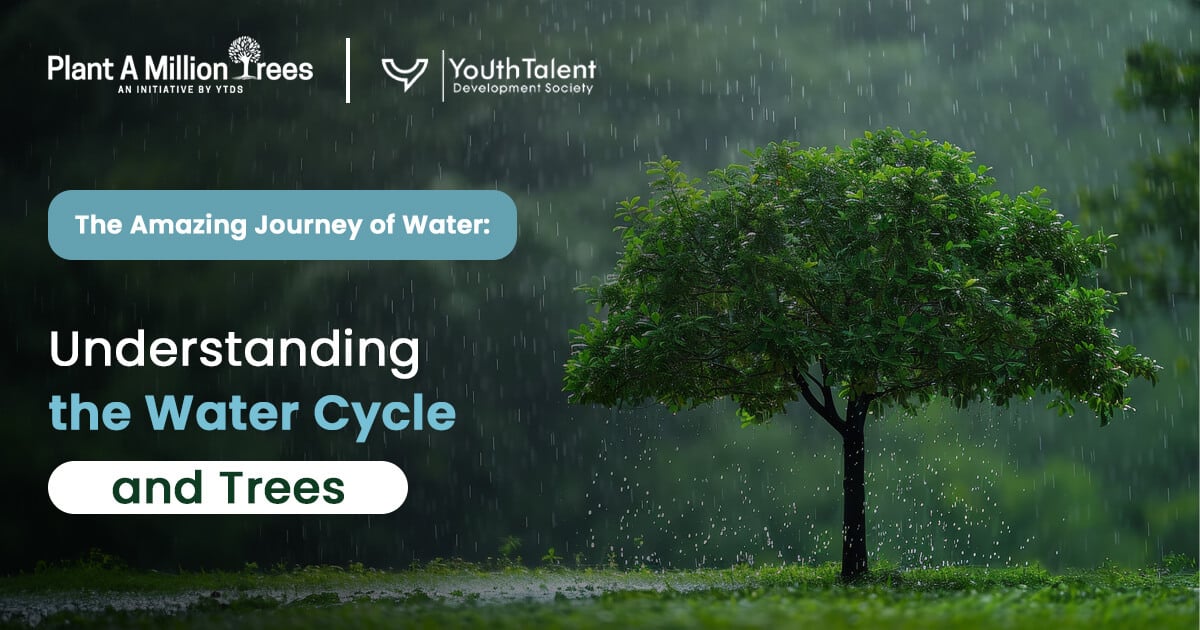Vitalized by the very life-giving water, it circulates the highest world’s journey in the real odyssey-The Water Cycle, and...
According to the continuous escalation of the threat from changes in climate, the times demand concrete and effective measures that practically necessitate a very natural yet powerful way of remedy: that is the means of planting trees.
Planting Trees Climate Change initiatives form a great part of the reduction of carbon levels as well as the curbing of rising temperatures and restoration of ecosystems.
Trees are the basic provider of the balance of the climate of the planet as they act as sinks for natural carbon. Hence, the reason why reforestation and afforestation play a greater role in keeping our earth safe from getting warmer.
The Role of Trees in Fighting Climate Change
Trees and Carbon Sequestration
A crucial way trees help mitigate climate change is through Trees and Carbon Sequestration. As trees grow, they absorb carbon dioxide (CO₂) from the atmosphere during photosynthesis, storing it within their trunks, roots, and leaves.
This process reduces greenhouse gases, lowering global temperatures and combating climate change.
The Long-Term Benefits of Forests
Forests act as one of the largest carbon storage systems on Earth, helping to balance the climate. However, when trees are cut down or burned, stored carbon is released back into the atmosphere, exacerbating global warming.
Protecting and expanding forests is essential for long-term climate stability.

Why Reforestation Matters for the Environment
Large-Scale Reforestation Programs
Reforestation is a highly effective climate change mitigation strategy. Global projects like the Trillion Tree Campaign and national initiatives aim to restore degraded lands and increase tree cover.
Governments, corporations, and non-profits are working together to combat deforestation and its adverse effects on the environment.
Urban Tree Planting and Its Benefits
Urban Tree Planting is another crucial aspect of climate action. Cities experience the “heat island effect,” where urban areas become significantly warmer due to asphalt and concrete trapping heat.
Planting trees in urban spaces helps regulate temperatures, improves air quality, and reduces the need for energy-intensive cooling solutions like air conditioning.
Agroforestry as a Sustainable Solution
Agroforestry, the integration of trees into agricultural landscapes, promotes sustainable farming while increasing carbon capture.
This method enhances soil fertility, prevents erosion, and supports biodiversity, making it a valuable tool for combating climate change in rural areas.
The Power of Community in Tree Plantation Drives
How Local Efforts Make a Difference
Community Tree Planting Initiatives are growing worldwide, with grassroots organizations leading efforts to restore tree cover.
These movements encourage individuals to participate in conservation, creating a culture of environmental responsibility.
Ways You Can Contribute
Everyone can take part in reforestation efforts. Whether it’s planting a tree in your backyard, supporting afforestation programs, or volunteering for tree-planting events, small actions collectively make a significant impact.
Environmental and Social Benefits of Afforestation
Restoring Degraded Lands
Afforestation, the process of planting trees in areas previously barren of forests, helps revive ecosystems. The Benefits of Afforestation include preventing desertification, improving water retention, and fostering biodiversity.
Role of Trees in Reducing Global Warming
Beyond carbon sequestration, trees provide multiple environmental benefits. They cool the planet by releasing moisture into the atmosphere, regulate rainfall patterns, and improve soil health, all of which contribute to reducing global warming.
Economic and Social Advantages
In addition to environmental benefits, afforestation provides economic opportunities, such as sustainable timber production, eco-tourism, and employment in conservation projects. Community-driven tree planting programs also strengthen local economies.
Common Questions About Trees and Climate Action
How does planting trees help climate change?
Trees absorb CO₂, reducing greenhouse gas concentrations and helping to stabilize the climate. Additionally, they provide cooling effects, improve soil quality, and enhance biodiversity.
What are the best trees to plant for carbon capture?
Some of the most effective trees for carbon sequestration include oak, pine, eucalyptus, mangroves, and redwoods. Fast-growing species like poplar and willow are also excellent for carbon absorption.
What is the impact of deforestation on climate change?
Deforestation releases stored carbon back into the atmosphere, accelerating global warming. It also disrupts ecosystems, reduces rainfall, and contributes to biodiversity loss.
How does urban tree planting help fight climate change?
Urban trees mitigate the heat island effect, reduce energy consumption for cooling, improve air quality, and capture CO₂, making cities more livable and sustainable.
Can tree planting alone solve climate change?
While tree planting is a powerful tool for climate mitigation, it must be combined with emissions reductions, clean energy transitions, and sustainable land management to be fully effective.
Conclusion
Tackling climate change requires collective effort, and planting trees is one of the most effective and accessible solutions. From large-scale reforestation programs to Community Tree Planting Initiatives, every tree planted plays a role in reducing carbon emissions and restoring ecosystems.
Now is the time to act—Join YTDS’s #PlantAMillionTrees movement today and help combat climate change—one tree at a time.


